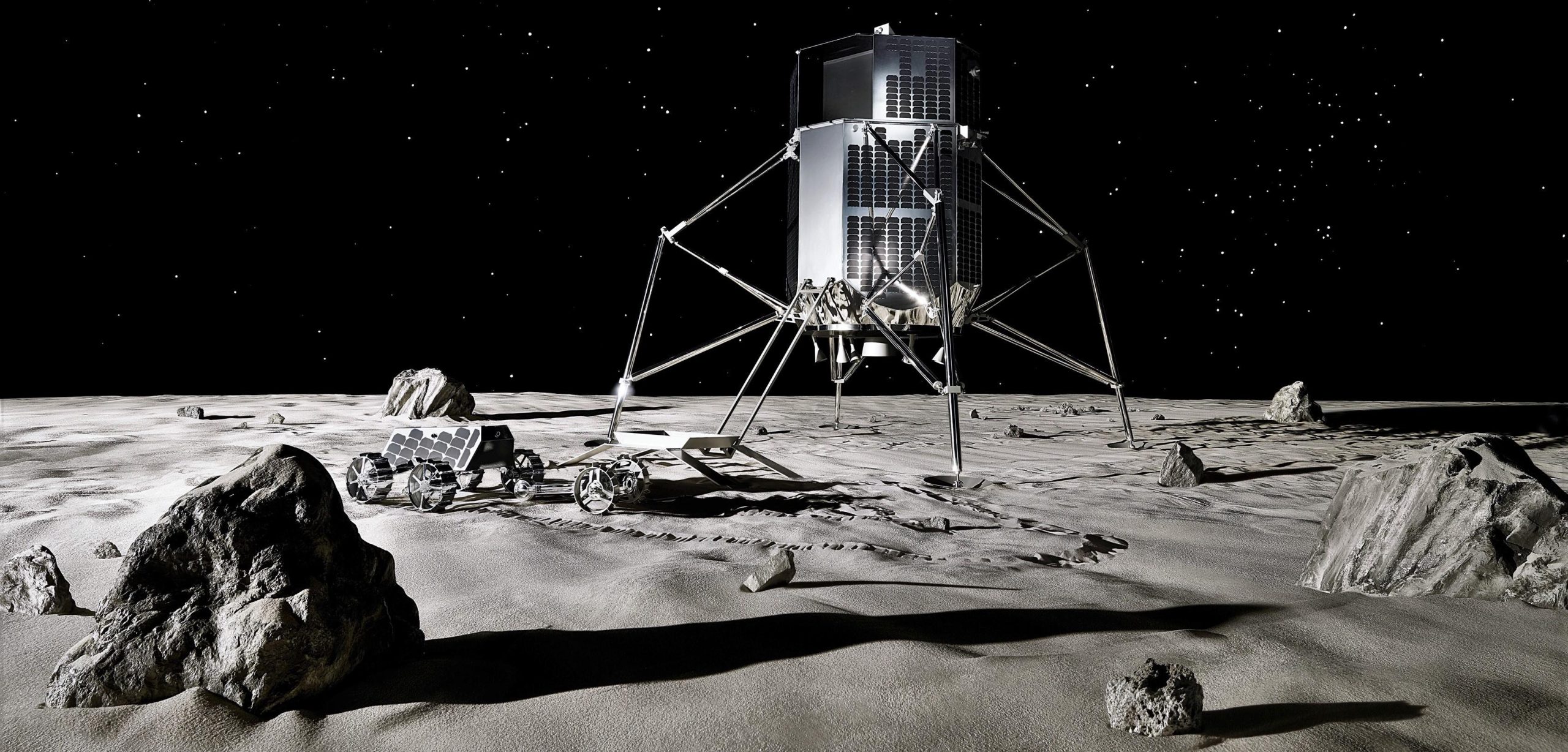
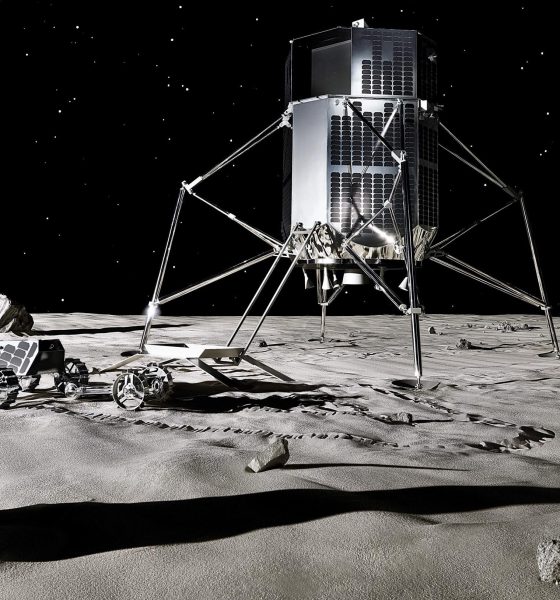
News
SpaceX customer iSpace updates Falcon 9-launched Moon lander, rover plans
Japanese commercial space company iSpace has provided an updated schedule for its first private missions to the Moon, both set to launch on Falcon 9 rockets and land on the Moon as early as 2021 and 2023.
iSpace’s goal is to understand and map lunar resources (particularly water ice) and eventually gather and process those materials into resources that could help enable far more ambitious lunar exploration, up to and including a partially self-sustaining lunar outpost capable of supporting astronauts. Known as Hakuto-R (“white rabbit” reboot), iSpace began as a team pursuing the Google Lunar XPRIZE before its cancelation in 2018 after several postponements pushed competing teams well past the prize deadline.
We also announced an updated mission schedule for the HAKUTO-R Program. We will perform a lunar landing in 2021 and a lunar landing and rover deployment in 2023. https://t.co/jGaZ3eqRRE— HAKUTO-R (@HAKUTO_Reboot_e) August 22, 2019
Despite the death of the Lunar XPRIZE, iSpace managed to not only survive but thrive in a more entrepreneurial environment. The company managed to convince several major investors of the potential value of commercial space exploration and became one of a select few spaceflight startups – certainly the only space resources startup – that has raised almost $100 million.
Relative to similar startups Planetary Resources (purchased by a blockchain company; effectively dead) and Deep Space Industries (acquired by Bradford Space), iSpace is in an unprecedentedly healthy position to realize its space resource ambitions.
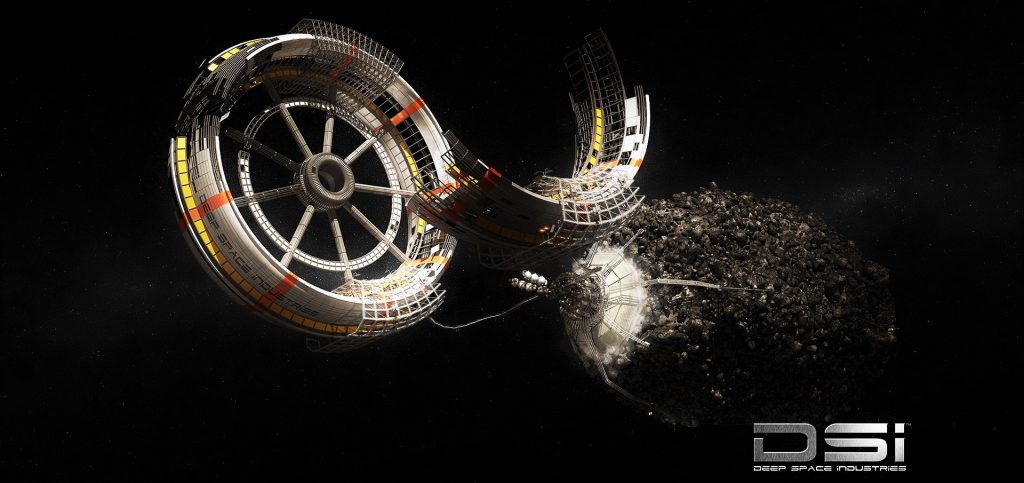
NewSpace, OldProblems
One could likely climb to the Moon with nothing more than a printed stack of all the studies, analyses, white papers, and hollow promises ever published on the utilization of space-based resources, an ode to the simultaneous promise and pitfalls the idea poses. As many have discovered, developing the ability to acquire, refine, and sell space resources is one of the most long-lead problems in existence. Put another way, funding a space exploration company on the promise of (or income from) space resources is a bit like paying for a solid-gold ladder by selling the fruit you needed it to reach.
For such an enterprise to make economical sense, one must either have access to ladders that are cheaper than their weight in gold or be able to sell the harvested fruit at breathtaking premiums. The point of this analogy is to illustrate just how challenging, expensive, and immature deep space exploration is relative to the possible resources currently within its grasp. There is also a bit of a circular aspect to space resource utilization: to sell the resources at the extreme premiums needed to sustain their existence, there must be some sort of established market for those resources – ready to purchase them the moment they’re available.
To build a market on space resources, one must already possess space resources to sell. This is the exact thing that government space agencies like NASA should develop, but entrenched and greedy corporate interests have effectively neutered NASA’s ability to develop technology that might transcend the need for giant, ultra-expensive, expendable rockets.
The need to secure funding via investors – investors expecting some sort of return – is the biggest roadblock to space resource utilization. Really, the only conceivable way to sustainably raise funding for space resource acquisition is to already have a functional and sustainable company as a base. SpaceX is a prime example: the company hopes to fund the development of a sustainable city on Mars with income from its launch business and Starlink internet constellation.
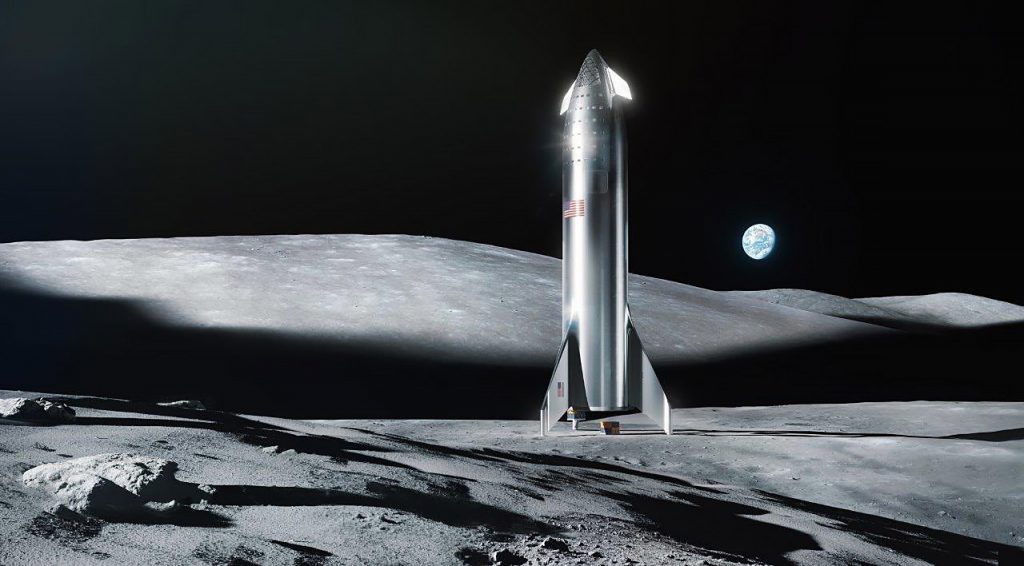
Ambitious plans, solid funding
Given all of the above, it’s extremely impressive that iSpace has managed to raise nearly $100M in just a few years and has done so without the involvement of one or several ultra-wealthy angel investors. Of course, it must still be acknowledged that the cost of iSpace’s longer-term ambitions can easily be measured in the tens of billions of dollars, but given an extremely lean operation and rapid success, $100M could plausibly fund at least one or two serious lunar landing attempts.
In the realm of flight tests, iSpace previously planned to perform a demonstration launch in 2020, in which a simplified lander would be used to orbit the Moon but not land. In the last year or so, the company has decided to entirely forgo that orbital test flight and instead plans to attempt a Moon landing on its first orbital flight, scheduled to launch on Falcon 9 no earlier than (NET) 2021. If successful, this inaugural landing would be followed as few as two years later (2023) by a lander and a lunar rover. Assuming a successful second landing, iSpace would move to ramp its production rates, launch cadence, and general ambitions, prospecting all over the Moon in 5-10+ separate lander missions.
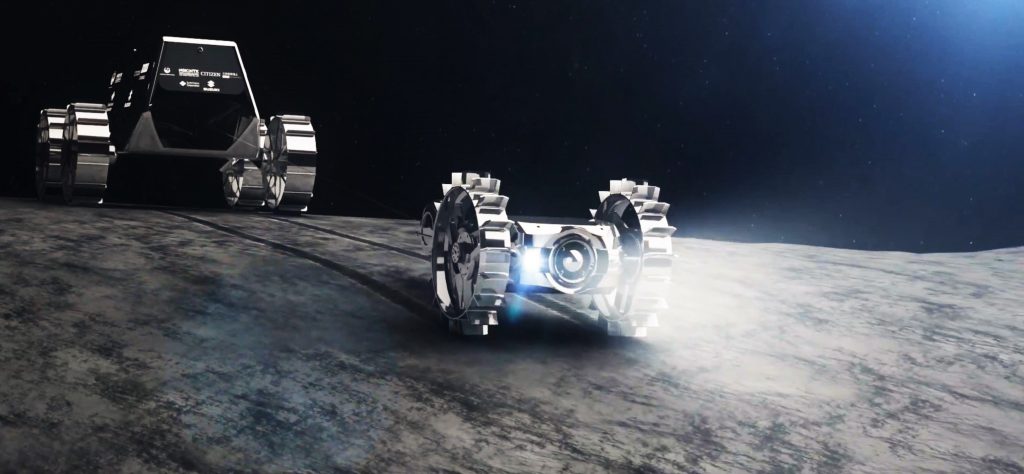
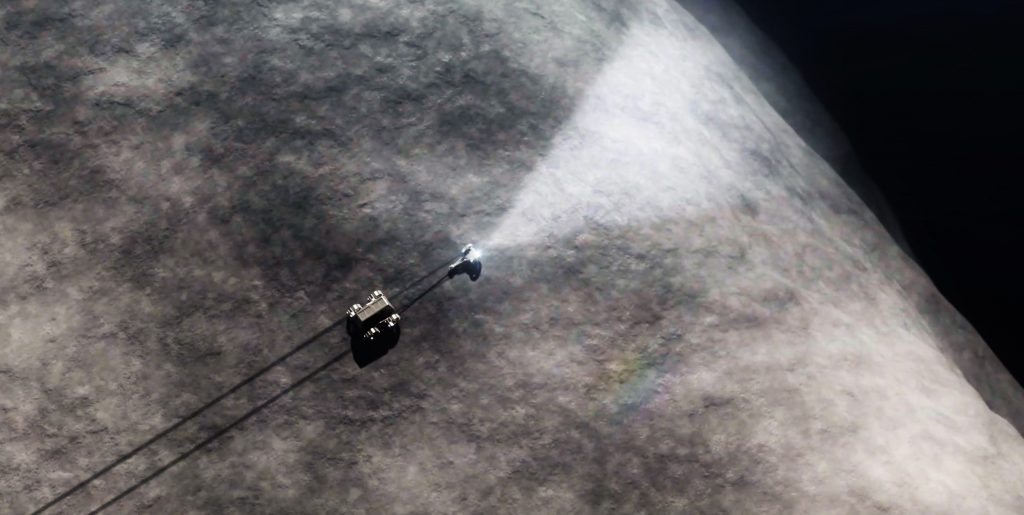
iSpace will still face the brick wall that all space resource companies eventually run into. Even if the company can successfully demonstrate a Moon landing and resource prospecting, it will need additional funding (and thus a commercially sustainable plan to sell investors on) to continue work and eventually, just maybe, get to a point where selling space-based resources can become a sustainable source of income.
Regardless of iSpace’s long-term business strategy, the early 2020s will be jam-packed with attempted commercial lunar landings, including Hakuto-R, Astrobotic, Intuitive Machines, and perhaps several other companies’ attempts. By all appearances, the exceptional mix of high performance and low cost offered by SpaceX’s Falcon 9 rocket will serve as a major enabler, allowing companies to put most of their funding into their landers instead of launch costs.
Check out Teslarati’s Marketplace! We offer Tesla accessories, including for the Tesla Cybertruck and Tesla Model 3.

News
Tesla FSD fleet is nearing 7 billion total miles, including 2.5 billion city miles
As can be seen on Tesla’s official FSD webpage, vehicles equipped with the system have now navigated over 6.99 billion miles.

Tesla’s Full Self-Driving (Supervised) fleet is closing in on almost 7 billion total miles driven, as per data posted by the company on its official FSD webpage.
These figures hint at the massive scale of data fueling Tesla’s rapid FSD improvements, which have been quite notable as of late.
FSD mileage milestones
As can be seen on Tesla’s official FSD webpage, vehicles equipped with the system have now navigated over 6.99 billion miles. Tesla owner and avid FSD tester Whole Mars Catalog also shared a screenshot indicating that from the nearly 7 billion miles traveled by the FSD fleet, more than 2.5 billion miles were driven inside cities.
City miles are particularly valuable for complex urban scenarios like unprotected turns, pedestrian interactions, and traffic lights. This is also the difference-maker for FSD, as only complex solutions, such as Waymo’s self-driving taxis, operate similarly on inner-city streets. And even then, incidents such as the San Francisco blackouts have proven challenging for sensor-rich vehicles like Waymos.
Tesla’s data edge
Tesla has a number of advantages in the autonomous vehicle sector, one of which is the size of its fleet and the number of vehicles training FSD on real-world roads. Tesla’s nearly 7 billion FSD miles then allow the company to roll out updates that make its vehicles behave like they are being driven by experienced drivers, even if they are operating on their own.
So notable are Tesla’s improvements to FSD that NVIDIA Director of Robotics Jim Fan, after experiencing FSD v14, noted that the system is the first AI that passes what he described as a “Physical Turing Test.”
“Despite knowing exactly how robot learning works, I still find it magical watching the steering wheel turn by itself. First it feels surreal, next it becomes routine. Then, like the smartphone, taking it away actively hurts. This is how humanity gets rewired and glued to god-like technologies,” Fan wrote in a post on X.
News
Tesla starts showing how FSD will change lives in Europe
Local officials tested the system on narrow country roads and were impressed by FSD’s smooth, human-like driving, with some calling the service a game-changer for everyday life in areas that are far from urban centers.

Tesla has launched Europe’s first public shuttle service using Full Self-Driving (Supervised) in the rural Eifelkreis Bitburg-Prüm region of Germany, demonstrating how the technology can restore independence and mobility for people who struggle with limited transport options.
Local officials tested the system on narrow country roads and were impressed by FSD’s smooth, human-like driving, with some calling the service a game-changer for everyday life in areas that are far from urban centers.
Officials see real impact on rural residents
Arzfeld Mayor Johannes Kuhl and District Administrator Andreas Kruppert personally tested the Tesla shuttle service. This allowed them to see just how well FSD navigated winding lanes and rural roads confidently. Kruppert said, “Autonomous driving sounds like science fiction to many, but we simply see here that it works totally well in rural regions too.” Kuhl, for his part, also noted that FSD “feels like a very experienced driver.”
The pilot complements the area’s “Citizen Bus” program, which provides on-demand rides for elderly residents who can no longer drive themselves. Tesla Europe shared a video of a demonstration of the service, highlighting how FSD gives people their freedom back, even in places where public transport is not as prevalent.
What the Ministry for Economic Affairs and Transport says
Rhineland-Palatinate’s Minister Daniela Schmitt supported the project, praising the collaboration that made this “first of its kind in Europe” possible. As per the ministry, the rural rollout for the service shows FSD’s potential beyond major cities, and it delivers tangible benefits like grocery runs, doctor visits, and social connections for isolated residents.
“Reliable and flexible mobility is especially vital in rural areas. With the launch of a shuttle service using self-driving vehicles (FSD supervised) by Tesla in the Eifelkreis Bitburg-Prüm, an innovative pilot project is now getting underway that complements local community bus services. It is the first project of its kind in Europe.
“The result is a real gain for rural mobility: greater accessibility, more flexibility and tangible benefits for everyday life. A strong signal for innovation, cooperation and future-oriented mobility beyond urban centers,” the ministry wrote in a LinkedIn post.
News
Tesla China quietly posts Robotaxi-related job listing
Tesla China is currently seeking a Low Voltage Electrical Engineer to work on circuit board design for the company’s autonomous vehicles.

Tesla has posted a new job listing in Shanghai explicitly tied to its Robotaxi program, fueling speculation that the company is preparing to launch its dedicated autonomous ride-hailing service in China.
As noted in the listing, Tesla China is currently seeking a Low Voltage Electrical Engineer to work on circuit board design for the company’s autonomous vehicles.
Robotaxi-specific role
The listing, which was shared on social media platform X by industry watcher @tslaming, suggested that Tesla China is looking to fill the role urgently. The job listing itself specifically mentions that the person hired for the role will be working on the Low Voltage Hardware team, which would design the circuit boards that would serve as the nervous system of the Robotaxi.
Key tasks for the role, as indicated in the job listing, include collaboration with PCB layout, firmware, mechanical, program management, and validation teams, among other responsibilities. The role is based in Shanghai.
China Robotaxi launch
China represents a massive potential market for robotaxis, with its dense urban centers and supportive policies in select cities. Tesla has limited permission to roll out FSD in the country, though despite this, its vehicles have been hailed as among the best in the market when it comes to autonomous features. So far, at least, it appears that China supports Tesla’s FSD and Robotaxi rollout.
This was hinted at in November, when Tesla brought the Cybercab to the 8th China International Import Expo (CIIE) in Shanghai, marking the first time that the autonomous two-seater was brought to the Asia-Pacific region. The vehicle, despite not having a release date in China, received a significant amount of interest among the event’s attendees.








